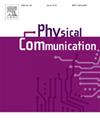利用深度强化学习的可重构智能表面辅助 NLOS 雷达抗干扰
IF 2
4区 计算机科学
Q3 ENGINEERING, ELECTRICAL & ELECTRONIC
引用次数: 0
摘要
雷达环境的复杂性随着技术的进步而增加,特别是考虑到重复干扰器带来的困难。这些干扰器会阻碍雷达探测,尤其是在非视距(NLOS)情况下制造假目标。本研究侧重于优化可重构智能表面(RIS)的相移,以解决目标与雷达之间的非视距问题,从而解决这些非视距问题。具体来说,我们研究使用遗传算法(GA)优化 RIS 相移,以应对各种动态场景中重复干扰器带来的挑战。我们的目标是,当环境中存在中继干扰器时,提高雷达系统在非低视距场景中探测实际目标的能力。根据实验结果,该方法通过提高雷达在非近距离环境中的探测性能,为减轻中继干扰器的影响提供了一种实用方法。本文章由计算机程序翻译,如有差异,请以英文原文为准。
Reconfigurable Intelligent Surfaces Assisted NLOS Radar Anti Jamming Using Deep Reinforcement Learning
The complexity of the radar environment increases with technological advancement, especially when considering the difficulties presented by repeating jammers. These jammers can impede radar detection, especially when they create false targets in non-line-of-sight (NLOS) situations. This study focuses on optimizing the phase shifts of Reconfigurable Intelligent Surfaces (RIS) to address the problem of NLOS between a target and radar for detection in order to address these NLOS issues. Specifically, we investigate RIS phase shift optimization using a Genetic Algorithm (GA) to address the challenges posed by repeating jammers across various dynamic scenarios. Our objective is to increase the radar system’s ability to detect actual targets in non-LOS scenarios when repeater jammers are present in the environment. According to the experimental results, this method offers a practical way to mitigate the effects of repeater jammers by improving radar detection performance in NLOS environments.
求助全文
通过发布文献求助,成功后即可免费获取论文全文。
去求助
来源期刊

Physical Communication
ENGINEERING, ELECTRICAL & ELECTRONICTELECO-TELECOMMUNICATIONS
CiteScore
5.00
自引率
9.10%
发文量
212
审稿时长
55 days
期刊介绍:
PHYCOM: Physical Communication is an international and archival journal providing complete coverage of all topics of interest to those involved in all aspects of physical layer communications. Theoretical research contributions presenting new techniques, concepts or analyses, applied contributions reporting on experiences and experiments, and tutorials are published.
Topics of interest include but are not limited to:
Physical layer issues of Wireless Local Area Networks, WiMAX, Wireless Mesh Networks, Sensor and Ad Hoc Networks, PCS Systems; Radio access protocols and algorithms for the physical layer; Spread Spectrum Communications; Channel Modeling; Detection and Estimation; Modulation and Coding; Multiplexing and Carrier Techniques; Broadband Wireless Communications; Wireless Personal Communications; Multi-user Detection; Signal Separation and Interference rejection: Multimedia Communications over Wireless; DSP Applications to Wireless Systems; Experimental and Prototype Results; Multiple Access Techniques; Space-time Processing; Synchronization Techniques; Error Control Techniques; Cryptography; Software Radios; Tracking; Resource Allocation and Inference Management; Multi-rate and Multi-carrier Communications; Cross layer Design and Optimization; Propagation and Channel Characterization; OFDM Systems; MIMO Systems; Ultra-Wideband Communications; Cognitive Radio System Architectures; Platforms and Hardware Implementations for the Support of Cognitive, Radio Systems; Cognitive Radio Resource Management and Dynamic Spectrum Sharing.
 求助内容:
求助内容: 应助结果提醒方式:
应助结果提醒方式:


